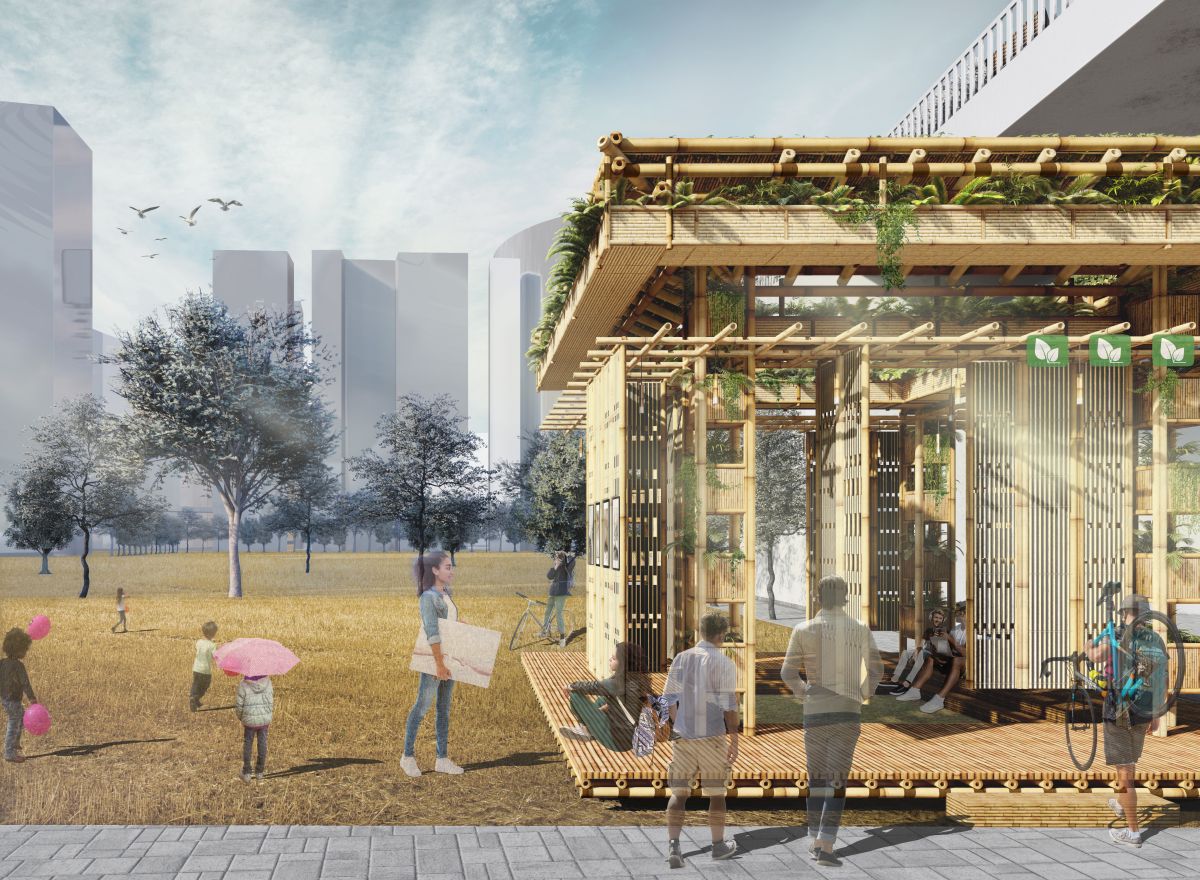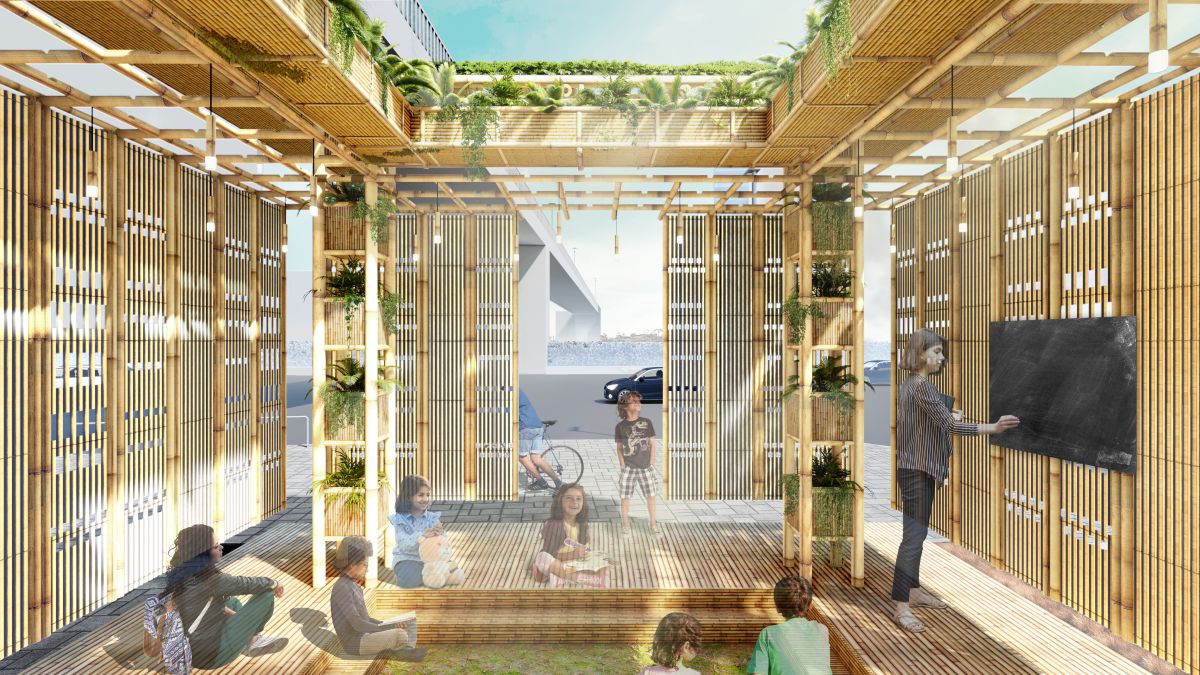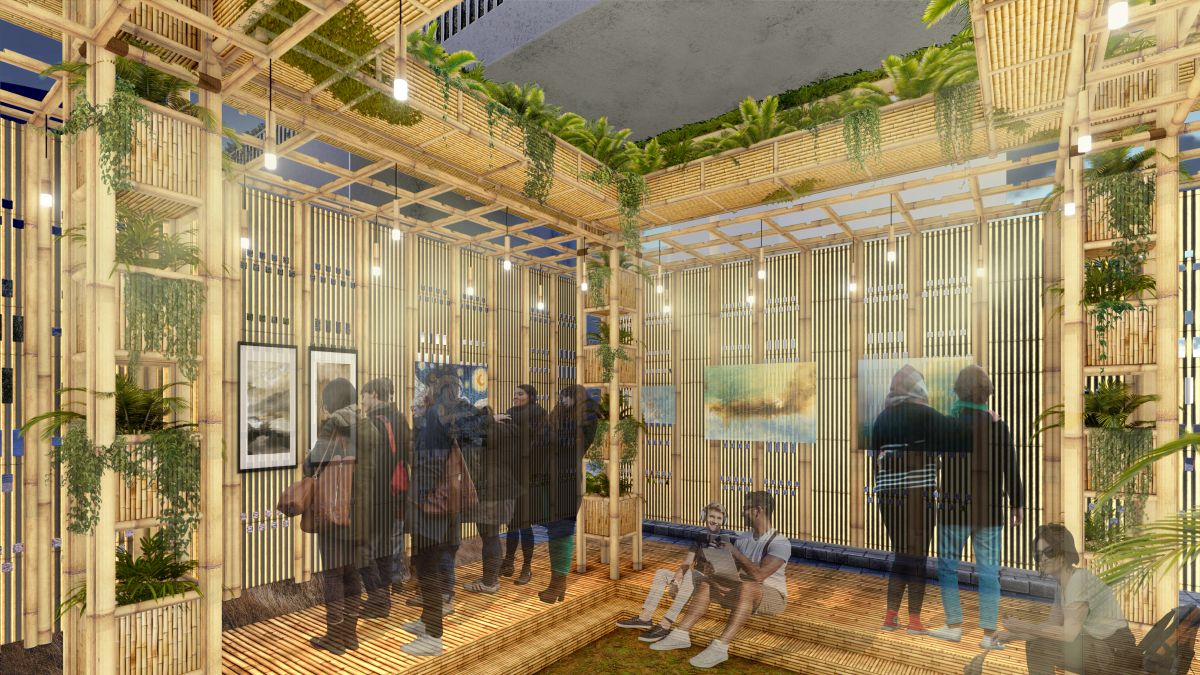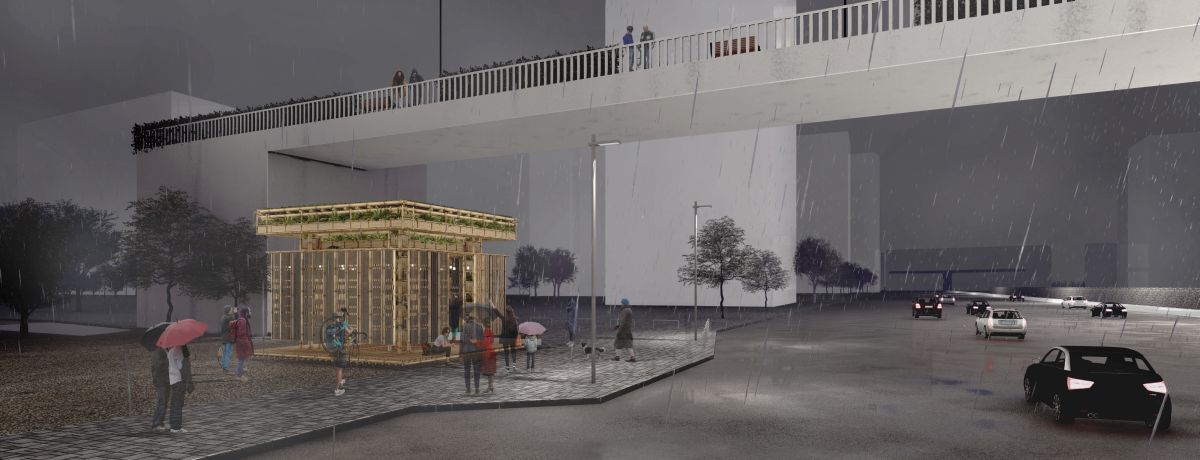Note: This project is an entry for the NODE Pavilion Design competition, organized by IDHA Labs, and was declared the Winners in the Professional category.
“A pavilion that grows!”
The initial idea of imagining this pavilion started with the question “how to make sure that the given small area be utilised fully and be made multi-functional and modular, especially in accommodating the dynamic needs and activities of the urban lifestyle?”
Along with it, “how to visually create a sense of ‘life’ through design, in the sense that the pavilion is actually alive(like an organism) and grows over time?” And so, as a response to these questions, the design is developed to make sure that whenever a building material like bamboo, or similar natural materials, is thought of to design or build with, it is not imagined as a catalyst or a symbol of an alternative lifestyle which is an alien approach to the urban. Rather, this pavilion became a space curated by the people according to their requirements, evolving and growing over time.
The pavilion can be adapted to various functions – like a spiritual event, an exhibition, a place to simply hang out, an emergency shelter(like for the ongoing pandemic) or even something with commercial viability, like a pop-up store for an upcoming brand. So, the design at its core is composed of a rigid primary structure, with the plinth, the columns, and the roof, over which the bamboo screens can be placed and depending on the requirements, the pavilion can shapeshift into a number of possible spatial arrangements, accommodating group activities, as well as providing a space for individual retreat or a space to reflect.
And as the nature of these activities and the design expression of the pavilion changes and evolves over time, the pavilion literally grows, with plants and greens growing and flowing over from their initial confinement. Placed in the cold and dead context of Gurugram, which ages and weathers over time, the pavilion stands in contrast as it slowly comes to life.
Subconsciously, the transition for the use of bamboo for creating urban nodes like these is focused on, which can then become hotspots or hubs of various activities throughout the city.
Videos –











